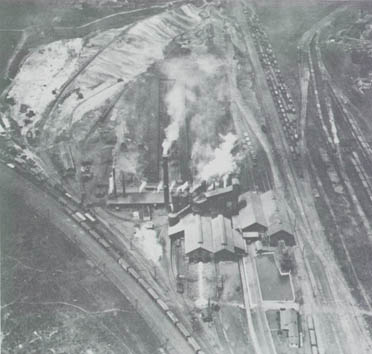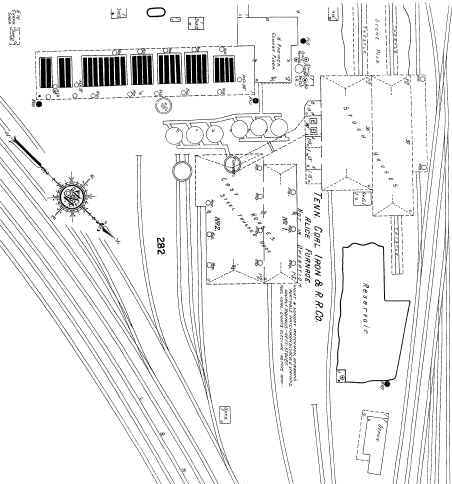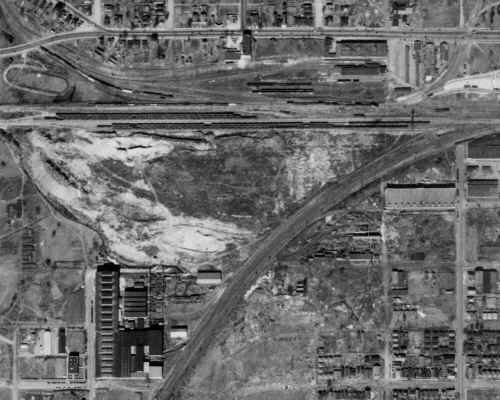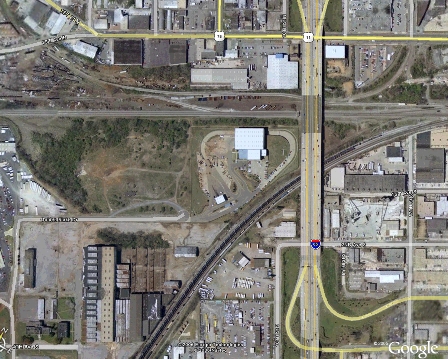Alice Furnace
This view shows the Alice plant looking southwest. Note that the No. 1 furnace has been dismantled, and that some of the stoves have been rebuilt. It is hard to judge the year on this image but it would be after 1905.
It is easy to see the slag piles in the upper left of the image, and the battery coke ovens appear to be in service behind the smoke. Image what downtown Birmingham must have been like with Alice on the west and Sloss furnace on the east -- and no air-conditioning!
Woodward tells us there were 250 battery (beehives in a row) coke ovens at this site, with 150 built in 1880 and another 100 added later. Initially, red ore came from Grace's Gap on the Morris property, and later from the TCI mines at Hillman and Redding.
Coal for Alice came from the Pratt Mines throughout her life. Originally the Pratt mines had a private railroad just to serve Alice furnace, later becoming part of the Birmingham Southern lines.
Alice No. 1 was dismantled in 1905 and No.2 was blown out in 1927 and dismantled in 1929. But the No. 1 Alice Furnace made the first basic pig iron in the Birmingham District which was suitable for open hearth use, as compared to the Bessemer converters used earlier. From Woodward, describing an 1897 pamphlet:
"'The Alice Furnace ran on basic iron over a continuous period of more than twelve months and during that time supplied almost every steel works of any importance in the country', and 'it is a fact that not even a single ton of the iron was rejected by the customers.' The success of this run was a contributing factor in the decision to build a steel plant at Ensley" -- the first steel plant in the Birmingham District.
"The original Alice Furnace was extremely important in the development of the Birmingham District because its success convinced Northern capital that the manufacture of iron with coke in Birmingham was practical. Both of the Oxmoor furnaces had been converted to coke from charcoal but their performance was not impressive. The Edwards Furnace in Bibb County had been blown in a few months prior to the Alice But was using brown hematite ore. It remained for the Alice Furnaces to prove to the iron industry that Alabama coke and red hematite ore produced a good grade of foundry pig iron."
By 1940 the Alice Furnace site was a vacant lot as shown below. Fortunately her neighbor, Sloss Furnace has been preserved as a museum of the iron industry for future generations.
Today, tens of thousands of drivers pass above the Alice Furnace site on the I-65 viaduct as shown in the photo at the lower right. Most of these folks do not know the importance of the site they can hardly see over the concrete barrier along the interstate. This was the site of Alice Furnace which played a substantial role in the building of Birmingham, the Magic City. |
 |
 |
|
 |
 |
| Previous Page |